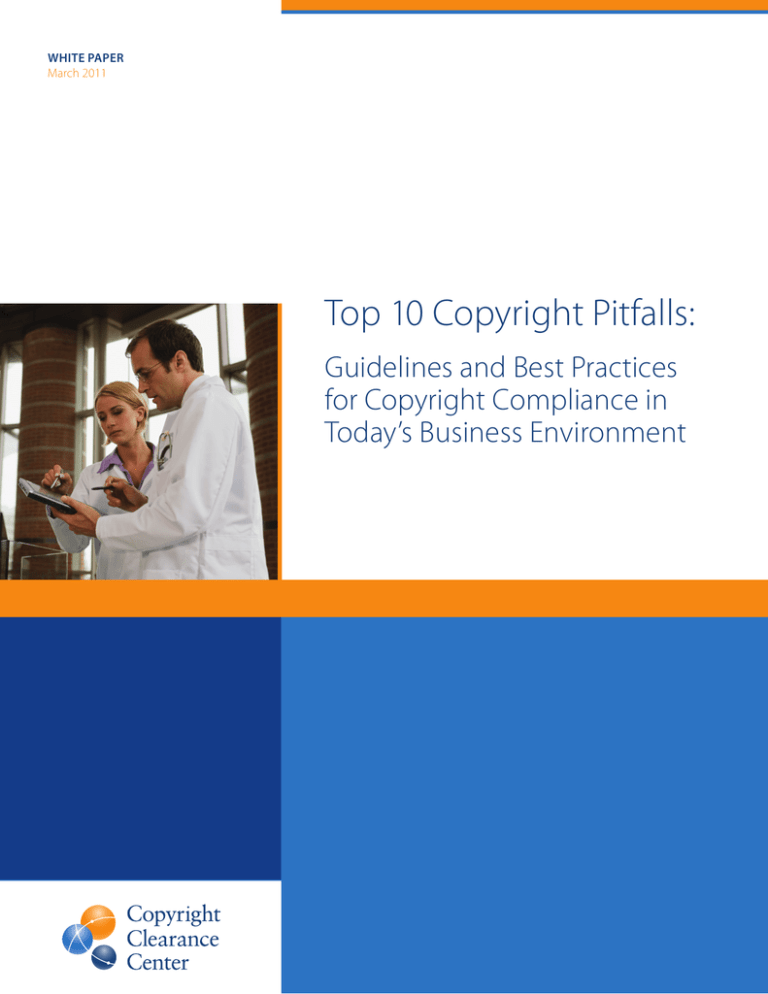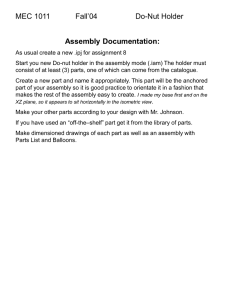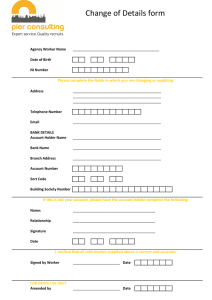
WHITE PAPER
March 2011
Top 10 Copyright Pitfalls:
Guidelines and Best Practices
for Copyright Compliance in
Today’s Business Environment
WHITE PAPER
Top 10 Copyright Pitfalls: Guidelines and
Best Practices For Copyright Compliance in
Today’s Business Environment
Increased access doesn’t have to mean increased risk
New technologies and distribution models make it easier than ever to find and share
information in the course of a day’s work. According to research and advisory firm Outsell,
Inc., knowledge workers share content more frequently than just five years ago. In 2013,
they shared content with an average of 11 people per week, up sharply from 2007, when
they shared with an average of seven people. In today’s information driven economy, that
is exactly the kind of behavior companies expect from their employees. But there is no
reason those actions have to put a company at risk of copyright infringement.
With digital content so easily available from every desktop, it is critical that employees
understand their responsibilities under copyright law. Top 10 Copyright Pitfalls identifies
some common misconceptions and provides guidelines and best practices for
educating employees and achieving copyright compliance.
Top 10 copyright pitfalls
1.“Our company’s newest product is featured in an influential trade journal.
Our PR department cooperated with the reporter. It’s important that our top
managers and marketing people see the article right away. Surely I can just
copy it and send it to that small group.”
Regardless of the fact that the article mentions your firm or that you cooperated
in producing it, you generally may obtain permission (or hold some other kind
of license) from the copyright holder or its agent before reproducing it and
distributing it to others. Failure to do so may infringe on the rights of the copyright
holder.
2.“As long as I cite my source, I can use third-party content in my articles,
reports and presentations.”
Including attribution in a work (for example, putting the author’s name on it) does
not eliminate the need to obtain the copyright holder’s consent for use of its
content beyond the traditional fair use analysis associated with short quotations. To
use more than brief quotations from copyrighted materials lawfully, you generally
may secure permission (or hold some other kind of license) from the respective
copyright holder or their agents.
Source: Copyright Clearance Center Information Consumption and Use Survey 2013
Copyright 2013 Outsell, Inc. http://www.outsellinc.com
01
WHITE PAPER
Top 10 Copyright Pitfalls: Guidelines and
Best Practices For Copyright Compliance in
Today’s Business Environment
3.“A website I use provides a free ‘Send to a Friend’ feature. Since they seem
to be giving content away and encouraging people to share it, what
difference could it make if I just copy and paste the same content into an
e-mail, post it to my intranet site, print it out and make copies, or use it in
my presentations?”
Even content posted on public areas of a website is protected by copyright, just as
is printed content. If publishers encourage you to forward their content to others
through a mechanism they provide (which retains their advertising, branding and
the like) that does not mean you may use it however you would like.
3
In this case, the “Send to a Friend” feature is part of a publisher’s business strategy. It
expands the exposure of the publisher’s content and brings additional visitors to its
sites, while enabling it to maintain control of its works. If you want to do something
that is not expressly authorized, you may generally obtain permission or have a license.
4.“We ordered paper reprints of an article, but I also want to e-mail it to people.
Because we paid for reprints, I don’t see any reason why I can’t scan it and
distribute it electronically.”
Most copyright holders license content based on format and type of use. Before
changing the format (for example, by scanning from paper to electronic), check
your license agreement carefully. You may have to acquire additional permission to
create electronic copies or to distribute that content electronically.
5.“I have permission to use the whole article, but I just want to use a chart from
it in a presentation.”
Check your license agreement carefully before excerpting, abstracting or otherwise
modifying content for which you have reuse permission. Permissions vary widely
and are often limited to the use of content “as is.” Also, articles containing photos,
charts and other graphic elements may have several different copyright holders.
Depending on what element or collection of elements you are seeking to use, you
may need to obtain permission from a copyright holder other than the one from
whom you have received a license to use the intact article.
6.“I am only posting this newsletter article on my company’s intranet site.We’re
the only ones who will see it, so I figure it’s not a big deal.”
Distributing copyrighted content by posting it to an intranet site is no different
than photocopying it for each employee. Such broad distribution throughout your
organization would likely require permission from the copyright holder or its agent.
02
WHITE PAPER
Top 10 Copyright Pitfalls: Guidelines and
Best Practices For Copyright Compliance in
Today’s Business Environment
7.“If I find something online, it is okay to use it in my company’s blog.
After all, it is just a blog.”
Copyright law is the same for blogs as it is for other original works. Blogs commonly
include excerpts of copyrighted material from other blogs and websites, along with
links to their sources, in order to critique that content.The challenge for even the
most copyright-savvy individuals is determining whether permission is required for
the particular use, of whether to rely on a complex and fact-specific fair use analysis.
8.“I contacted the copyright holder to request permission to use his content,
but he never got back to me. I assume this means he doesn’t care and it’s okay
to use the material.”
When requesting copyright permission it is important to note that a lack of
response from the copyright holder does not, under U.S. law, negate the need
to obtain permission. In addition, some works may contain materials — text,
images and graphics — from multiple copyright holders and may require different
authorizations depending upon what element or set of elements you wish to use.
9.“My company has an online subscription to a journal, so it should be okay if I
send my customers articles from it.”
Probably not. Reuse permissions included in subscriptions vary widely, and where
reuse is licensed most licenses limit distribution to other employees within your
company. Check your subscription carefully before sending content outside your
company. You may need to acquire additional permissions or purchase a digital or
print reprint to do so.
10. “It is no big deal if I use content without permission. I won’t get in trouble.”
Copyright protection exists to encourage the development of new and creative
works that spur innovation and can ultimately help drive your business. Failure to
respect copyright infringes on the legal rights of the copyright holder, and could
put you and your organization at risk.
1
If the copyright holder registered the work with the U.S. Copyright Office prior
to the infringement, the copyright holder may sue for compensation (and
an injunction). In the United States, court-ordered compensation can range,
depending on willfulness, from $200 to $150,000 for each infringing copy. You may
also be criminally liable if you willfully copy a work for profit or financial gain, or if
the copied work has a value of more than $1,000.
03
WHITE PAPER
Top 10 Copyright Pitfalls: Guidelines and
Best Practices For Copyright Compliance in
Today’s Business Environment
Making Copyright Compliance Easy
About Copyright Clearance Center
Copyright Clearance Center (CCC), the
rights licensing expert, is a global rights
broker for the world’s most soughtafter books, journals, blogs, movies,
and more. Founded in 1978 as a notfor-profit organization, CCC provides
smart solutions that simplify the
access and licensing of content. These
solutions let businesses and academic
institutions quickly get permission to
share copyright-protected materials,
while compensating publishers and
creators for the use of their works. We
make copyright work. For more
information, visit www.copyright.com.
The ability to share timely information is paramount for businesses striving to build
and maintain a competitive edge. While technology has made it easy to find and use
content, obtaining copyright permissions can be time-consuming and potentially
expensive. Copyright Clearance Center (CCC) provides smart solutions that simplify the
access and licensing of content. These solutions let businesses quickly get permission to
share copyright-protected materials, while compensating publishers and creators for the
use of their works.
CCC’s Annual Copyright License gives your employees the freedom to share content
from the most sought-after books, journals and other print and digital information
sources, while respecting the rights of copyright holders. The license allows workers—no
matter where they are located—to share information with colleagues through email,
collaboration tools, intranet sites, photocopies and more. It’s a risk mitigation tool for the
digital age, letting employees make the most of the advantages of the Internet while still
respecting copyright.
The Motion Picture License allows employees to show legally obtained movie scenes for
employee training, internal sales presentations and company meetings.
These copyright licenses allow employees to:
• Email online articles to fellow employees and coworkers
• Distribute copies of published articles at internal meetings
• Post excerpts of industry research on corporate intranet sites
• Print and copy published articles to share with company colleagues
• Include published material with regulatory submissions to government agencies
• Show scenes and full-length movies and TV shows in sales meetings, employee
trainings and other company functions, as well as public presentations.
How Can We Help You?
To learn how licensing solutions from CCC can help you manage copyright compliance,
call +1-978.750.8400, option 3, or visit www.copyright.com/acl.
© 2014 Copyright Clearance Center, Inc.
All rights reserved. Copyright Clearance Center and
the Copyright Clearance Center logo are registered
trademarks of Copyright Clearance Center, Inc.
222 Rosewood Drive
Danvers, MA 01923 USA
+1.978.750.8400 Phone
+1.978.646.8600 Fax
info@copyright.com
www.copyright.com
CRP 0214





